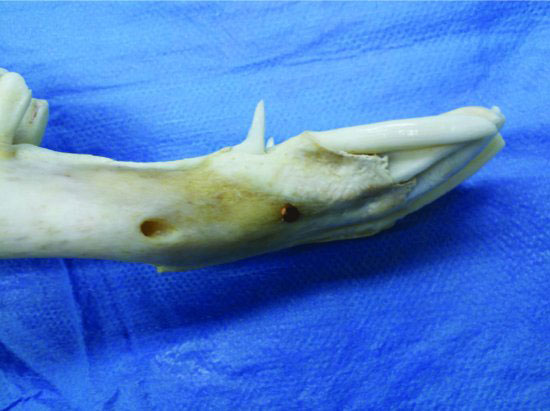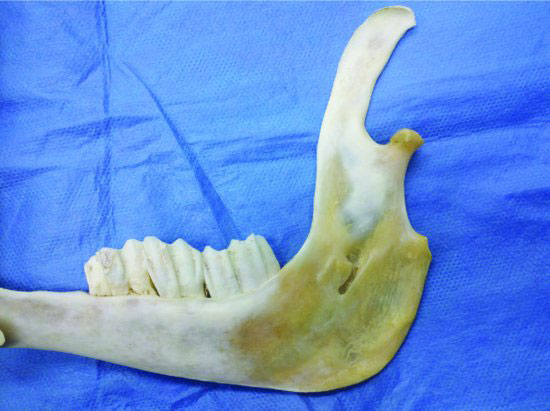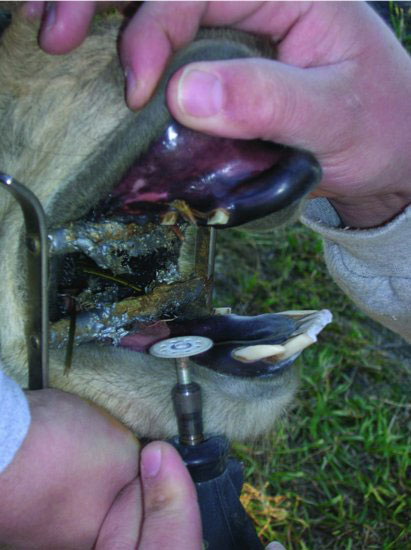When prolonged procedure times are expected, general anesthesia with orotracheal or nasotracheal intubation is advisable. When the procedure is done under sedation, infiltration of local anesthesia or blockade of the mental nerve diminishes adverse stimuli during the procedure and improves post-operative pain management. The rostral opening of the mental foramen can be palpated in the lateral aspect of the rostral mandible immediately caudal to the lower canine tooth (Figure 25.1). Retrograde infusion of 5 mL of lidocaine HCl 5% is done by inserting a 20-gauge needle into the foramen under palpation guidance. Anesthetic blockade of the mental nerve is more effective when done at the point of insertion of the nerve into the origin of the mental canal. The caudal foramen is located on the medial aspect of the mandible along the rostral aspect of the vertical ramus (Figure 25.2).
Figure 25.1 Rostral mandible showing incisor teeth, canine tooth, and rostral opening of the mental foramen on the lateral aspect of the rostral mandible immediately caudal to the lower canine tooth.

Figure 25.2 Anesthetic blockade of the mental nerve is done at the point of insertion of the nerve at the caudal opening of the mental canal, which is located on the medial aspect of the mandible along the rostral aspect of the vertical ramus.

After sedation or induction of anesthesia, a mouth gag is placed so that the mouth can be held open throughout the procedure (Figure 25.3). Then, a periodontal elevator or small periosteal elevator is used to disrupt the periodontal ligament surrounding the tooth (Figure 25.4). A periodontal elevator may be sufficient to loosen the tooth until it can be extracted. The tooth should be extracted intact. In the event that the tooth root fractures in the process of being extracted, thorough debridement of the alveolus should be done to ensure that all remaining enamel and debris are removed.
Figure 25.3 A mouth speculum, or “gag,” is used to separate the maxillary and mandibular arcades for dental work. The mouth speculum pictured is a swine mouth gag.

Stay updated, free articles. Join our Telegram channel

Full access? Get Clinical Tree



